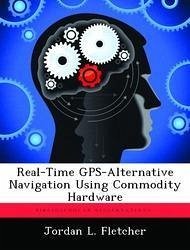Modern navigation systems can use the Global Positioning System (GPS) to accurately determine position with precision in some cases bordering on millimeters. Unfortunately, GPS technology is susceptible to jamming, interception, and unavailability indoors or underground. There are several navigation techniques that can be used to navigate during times of GPS unavailability, but there are very few that result in GPS-level precision. One method of achieving high precision navigation without GPS is to fuse data obtained from multiple sensors. This thesis explores the fusion of imaging and inertial sensors and implements them in a real-time system that mimics human navigation. In addition, programmable graphics processing unit technology is leveraged to perform stream-based image processing using a computer's video card. The resulting system can perform complex mathematical computations in a fraction of the time those same operations would take on a CPU-based platform. The resulting system is an adaptable, portable, inexpensive and self-contained software and hardware platform, which paves the way for advances in autonomous navigation, mobile cartography, and artificial intelligence.
Hinweis: Dieser Artikel kann nur an eine deutsche Lieferadresse ausgeliefert werden.
Hinweis: Dieser Artikel kann nur an eine deutsche Lieferadresse ausgeliefert werden.








